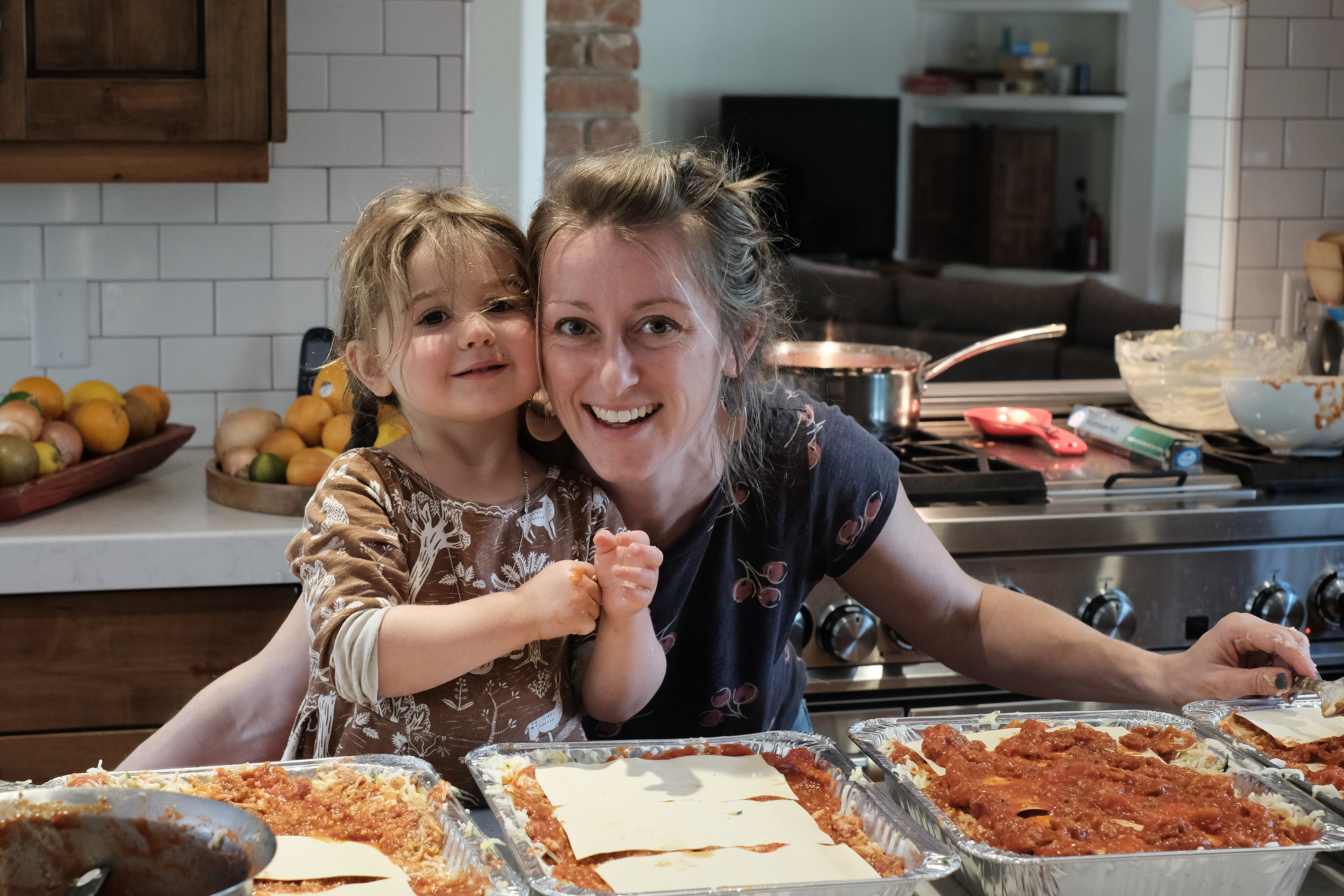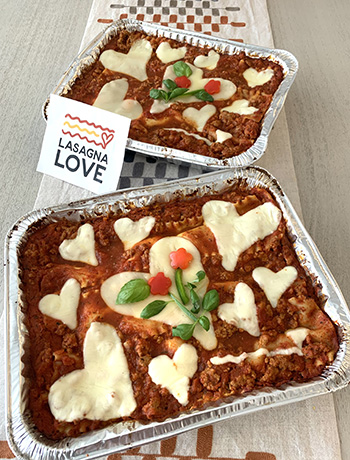Lasagna Love Spreads Layers of Kindness
-
-
Slice of MIT
Filed Under
Recommended

Rhiannon Menn MBA ’14, was driving across the country in a camper with her husband and two young kids in September 2020 when she got a call from the Today show. Days later, she was on television talking about Lasagna Love, the meal-delivery nonprofit she started out of her small kitchen in San Diego.
Menn’s project began in March 2020 when she teamed up with her then three-year-old daughter to make homemade lasagnas for local families in the early days of the pandemic. “For me, food is love, and it’s how I communicate care and support—so I just decided to start making meals,” she says. “I posted on some local moms’ groups saying, ‘Hey, if you need a home-cooked meal—no questions asked, my toddler and I are doing this, it keeps her busy, we love it—send me a message and I’ll drop one off at your doorstep.’”

The first week, Menn and her daughter made seven meals. Within a few weeks, other moms were offering to cook, and Menn happily helped connect volunteers with families who requested meals. It soon expanded into other communities across the US via social media; by May it was clear that the effort needed a name, and Lasagna Love was born. In the month after the Today segment, the volunteer base expanded from 400 to 4,000.
At that point Menn, a Sloan graduate, realized she needed help with logistics. She’d been using an unwieldy Google spreadsheet and Google Maps to pair volunteers with families by proximity, but that wasn’t scalable. So a friend and Lasagna Love volunteer, Jason Liang Chen MBA ’12, SM ’12, connected Menn to students in the MIT Leaders for Global Operations (LGO) Program, who built her an algorithm.
Volunteers—who access a recommended recipe, food safety information, and extensive training videos and instructional materials through the volunteer portal—receive weekly emails letting them know how many “matches” they have. Some offer to make numerous lasagnas a week, while others might only have the
time and budget to deliver one a month. Those who sign up to receive a lasagna provide their contact info, address, any dietary restrictions, and sometimes optional details, such as why they need help.
The program’s low barrier to entry is one key to its success, says Menn. Whether they are dealing with health problems, food insecurity, or countless other issues, requesters need only submit an online form to request a meal. (Requests are for a one-time meal, but forms can be re-submitted monthly.) One goal of the organization, Menn says, is to eliminate the stigma from asking for help. Then the volunteer coordinates the delivery, logging the date of contact, scheduled delivery date, and delivery confirmation in the system.
Today, Lasagna Love has nearly 50,000 volunteers spanning every US state and numerous countries, and more than 400,000 lasagnas have been delivered. Beyond providing meals to families in need, says Menn, Lasagna Love has become an international kindness movement.
“It’s really showcasing the network effect of kindness,” she says, citing studies from Harvard and the University of San Diego that show how far kind deeds can spread: “For every one act, there’s a three-degree ripple effect. The more acts of kindness that you can connect in the community, the more that ripples outward. And I think that has the potential to really strengthen communities in a way that we quite honestly could use.”
After years of steady growth, Lasagna Love remains almost entirely volunteer run, with just three paid employees. One of the original volunteers is now executive director, while Menn is president of the board. She’s now focused on making Lasagna Love’s technology open source so other nonprofits can use it.
“We’ve created this platform that connects neighbors with neighbors for service,” she says. “If we can do this for food delivery, which we were repeatedly told in the
beginning we couldn’t do, there are so many other services this could be leveraged for.”
This article also appears in the May/June issue of MIT Alumni News magazine, published by MIT Technology Review.







